A buttock massage concentrates on the gluteus muscles. The group of muscles that make up the gluteals includes the gluteus maximus, gluteus medius, gluteus minimus and the tensor fasciae latae. A buttock massage uses a variety of techniques to help treat muscle tightness and tension. A buttock massage aims to release muscle tightness and reduce pain that may be occurring due to those reasons. Massage therapists at Physio.co.uk use a buttock massage to reduce muscle tightness, tension and pain.
What techniques are used in a buttock massage?
There are a range of techniques used during a buttock massage. Techniques used include:
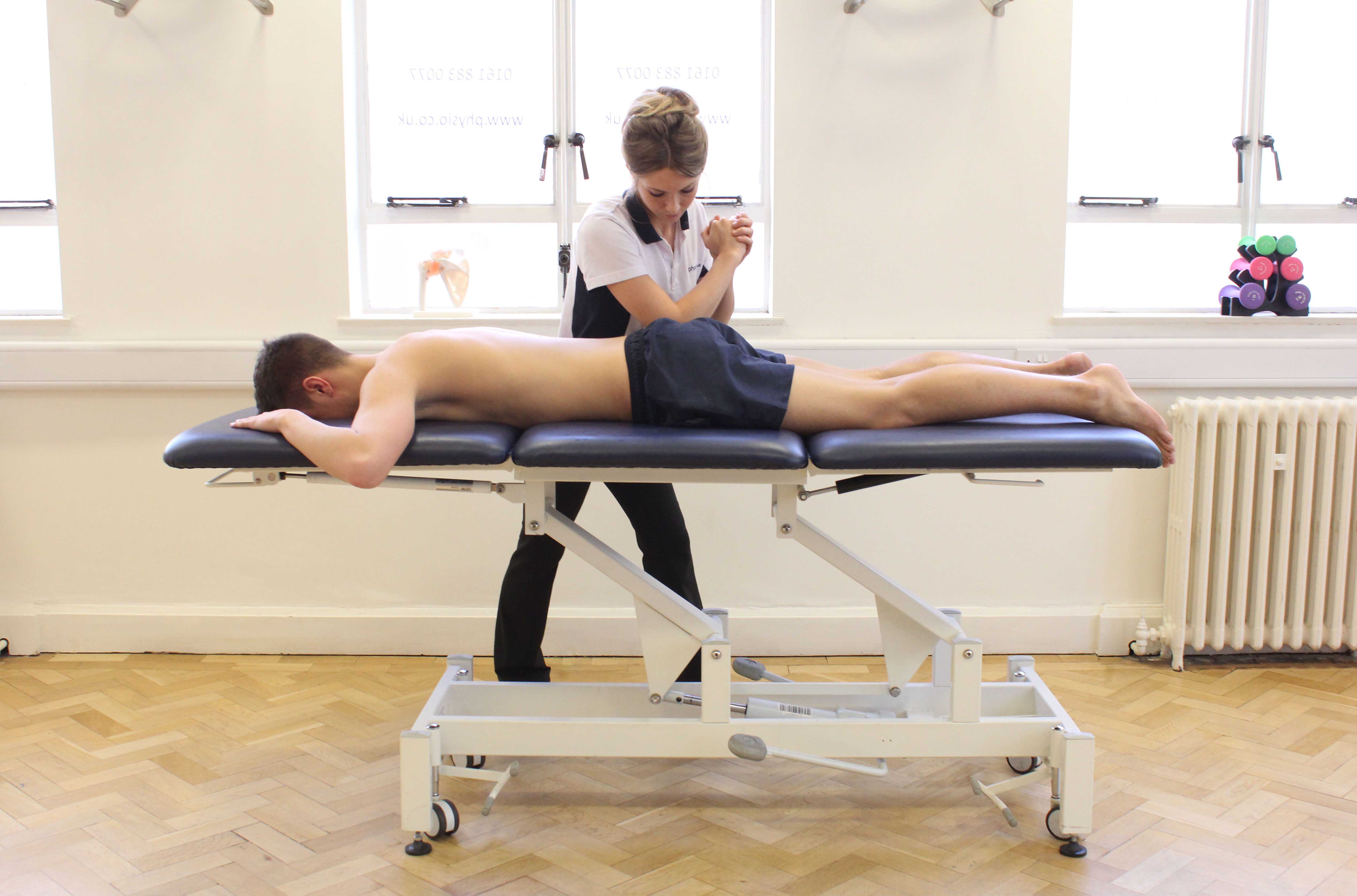 Above: Deep tissue massage of gluteus maximus muscle
Above: Deep tissue massage of gluteus maximus muscleCompression is an effective technique used during a buttock massage. Firm pressure is used within compression as the muscle in the buttock is very deep and strong. Compression helps increase the temperature of the muscles and increase blood circulation. Increasing blood circulation reduces pain. When blood circulation is improved, cellular exchange is increased. Cellular exchange increases oxygen and nutrients in the muscles and decreases waste products such as lactic acid. An increase in oxygen and nutrients decreases fatigue and reduces pain.
Kneading is a regular technique used during a buttock massage. Kneading is a technique where muscle tissues within the buttock region are pulled and squeezed. Kneading is used to improve blood flow and loosen muscle tightness. The pulling and squeezing actions performed during kneading encourages an increase in blood flow to the buttock region. Increasing blood flow provides more oxygen and nutrients to the area that aid in the maintenance of stronger healthier muscles. Pulling and squeezing muscle tissues helps to increase their temperature. Increasing tissue temperature improves elasticity and reduces restriction. A reduction in restriction, decreases muscle tightness.
Deep strokes are used during a buttock massage. Deep strokes are performed using flattened hands and fingers. A firm pressure is used to get deep into the muscle tissues. Deep strokes help relieve muscle tightness, tension and stress by stretching the muscle to help it relax. An increase in muscle temperature occurs, improving tissue elasticity and flexibility. Improving tissue elasticity and flexibility allows the muscle to move more freely without restriction. Reducing restriction through deep strokes relieves muscle tightness, tension and stress.
Trigger pointing is an effective technique used during a buttock massage. Trigger points are located in the centre of a muscle fibre. If not treated, trigger points can result in pain. During a buttock massage, pressure is placed on trigger points to help break down and soften muscular knots. When pressure is applied, blood flow is restricted causing an ischemic reaction. When the pressure is released, the body's natural healing process is activated so that an increase in blood flow is delivered to this area. An increase in blood flow provides the muscles with an increase of oxygen and nutrients that aid in keeping the muscle strong and healthy.
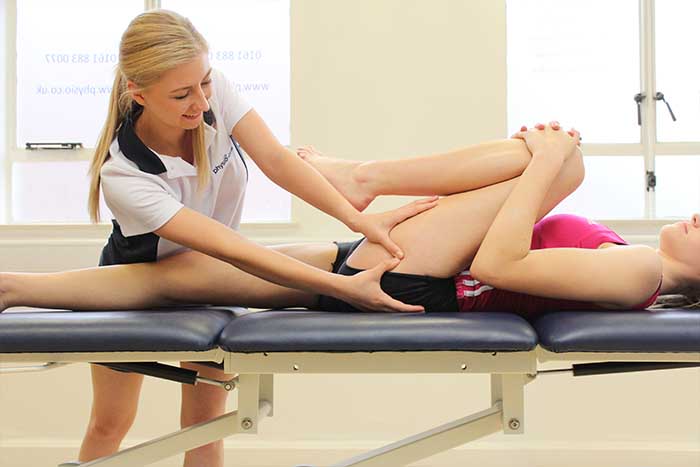
When can a buttock massage help?
A buttock massage can help on many different occasions. Occasions a buttock massage can help include:
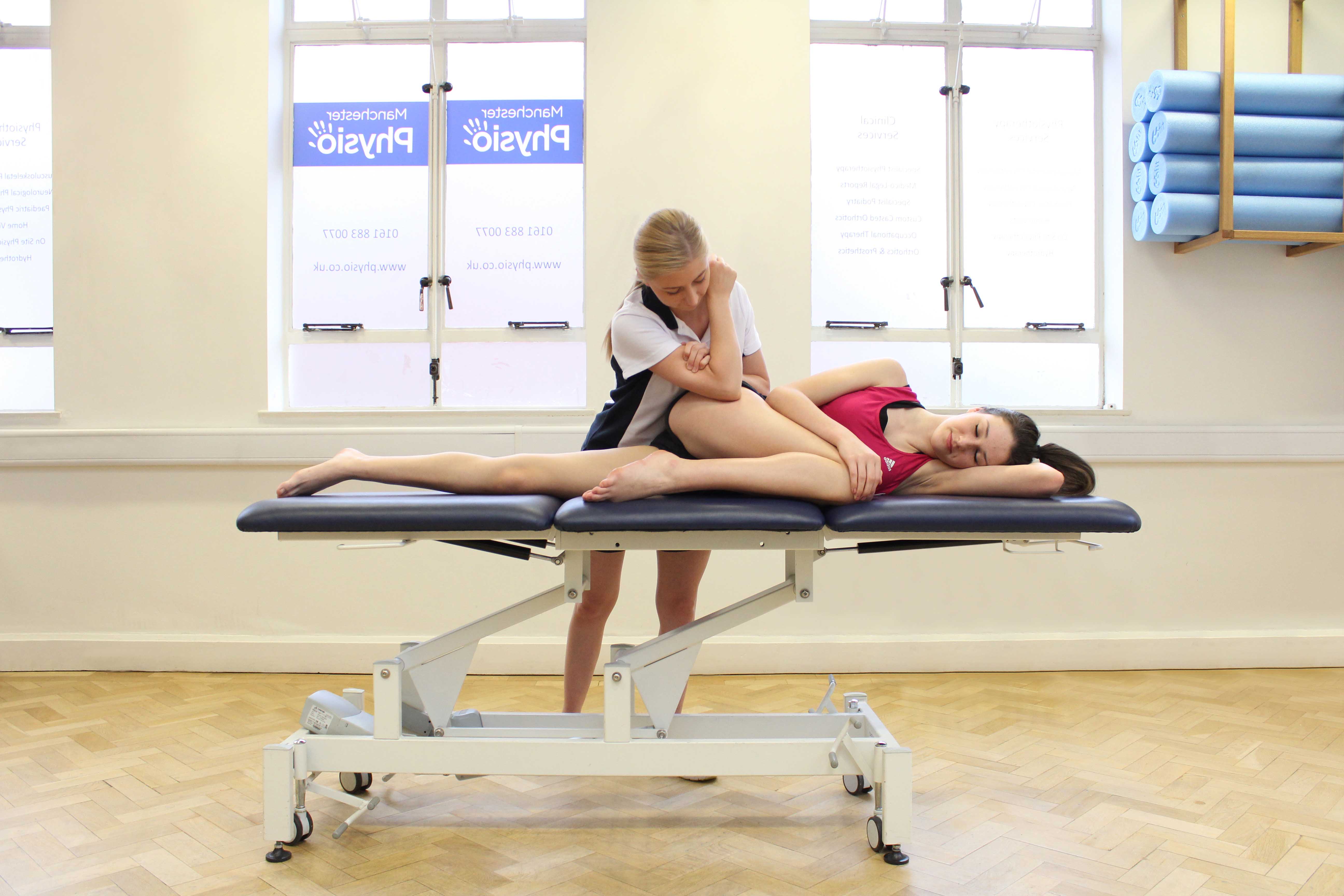 Above: Deep tissue massage of the glureus maximus muscle
Above: Deep tissue massage of the glureus maximus muscleHow does a buttock massage help acute pain?
A buttock massage can help treat acute pain. There are many different types of pain that can occur after activity including muscular ache and fatigue. Pain occurs when receptors in the body send a message to the brain telling it part of the body has been damaged. The brain will then send the message to the nerves which will then create a feeling of pain.
A buttock massage aims to reduce pain by interfering with the message sent from the brain to the nerves and relieving muscle tightness.
A buttock massage interferes with the message sent to the brain and nerves. Friction created between skin and fingers during a buttock massage creates a new sensation that is picked up by the receptors. When pressure is applied to areas of tightness or pain during a buttock massage, a numbing sensation gradually occurs. This sensation is picked up by receptors and sent to the brain, disturbing the original signal detecting pain. The brain then sends a message to the nerves that creates the numbing sensation rather than a feeling of pain. Interfering with the message sent to the brain means that the nerves do not create pain as they have not been told to do so. Interfering with the message therefore reduces acute pain.
A buttock massage also relieves muscle tightness and tension. Muscle tightness and tension is another cause of pain. Muscle tightness and tension is reduced as circulation improves. Improving circulation increases muscle temperature, giving muscles an increase in elasticity. Reducing muscle tightness and tension by increasing tissue elasticity, further reduces acute pain due to the decrease in restriction.
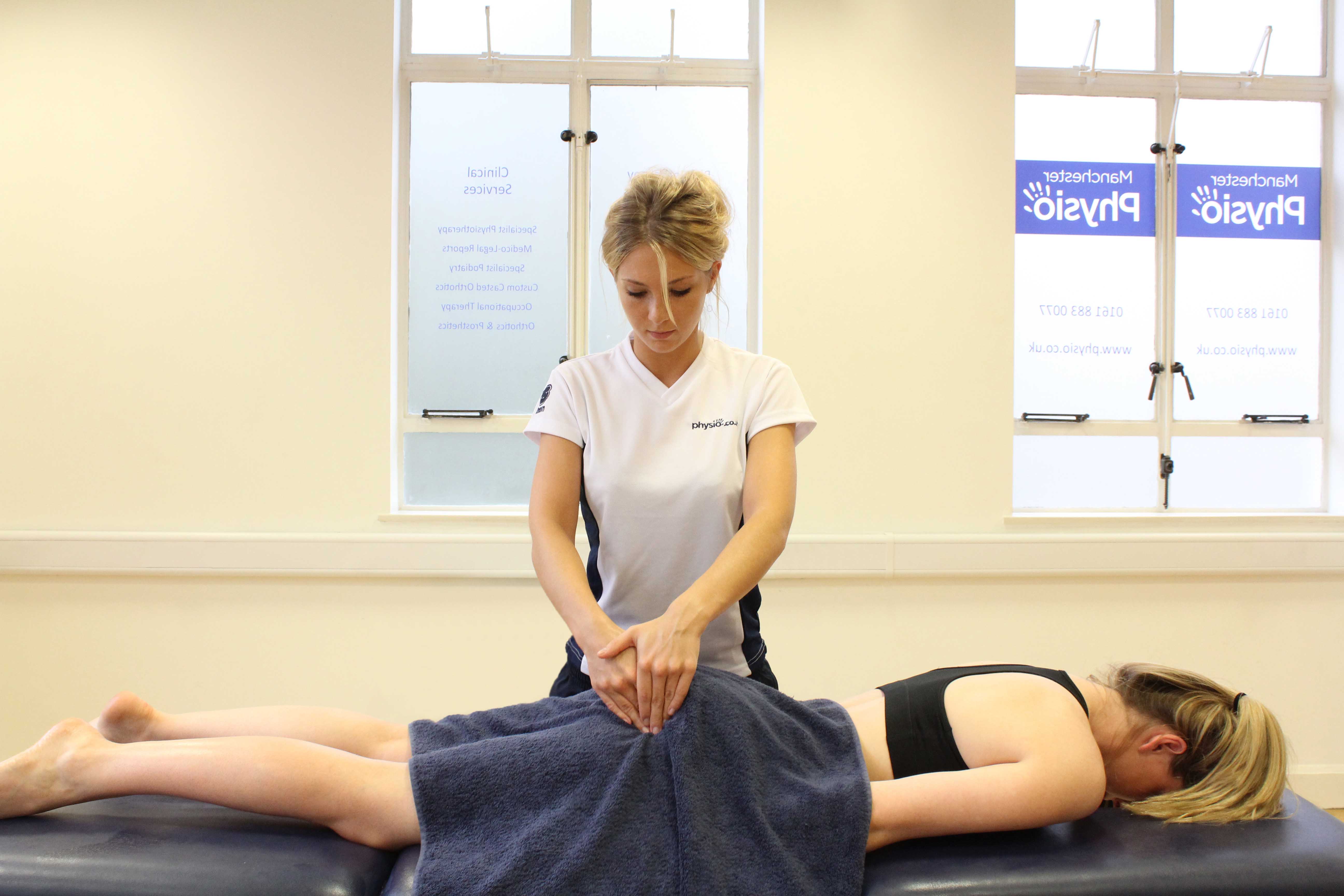 Above: Soft tissue massage of gluteus muscles
Above: Soft tissue massage of gluteus musclesHow does a buttock massage help delayed onset muscle soreness?
A buttock massage can help treat delayed onset muscle soreness. Delayed onset muscle soreness occurs up to 72 hours after intense exercise. The most common reasons delayed onset muscle soreness occurs include incomplete cool down after activity and overuse.
A buttock massage aims to help treat delayed onset muscle soreness by reducing swelling, increasing cellular exchange and improving blood circulation.
Delayed onset muscle soreness can be due to over stretching a muscle during exercise, resulting in microscopic tears in the muscle fibres. Inflammation is increased when tears occur in the muscle fibres. Inflammation results in muscle tightness and pain. Swelling is reduced as new, undamaged blood vessels grow that help remove any extra fluids that had built up to protect the injury.
During intense exercise, a build-up of lactic acid occurs. Lactic acid fatigues the muscle and causes muscular ache. When a cool down is incomplete, lactic acid will remain in the muscles and cause the muscles to fatigue and become painful. Cellular exchange removes metabolic wastes, such as lactic acid from the muscles and exchanges them with oxygen.
Improving blood circulation provides muscles with more oxygen and nutrients to help reduce fatigue. An improvement of blood circulation and increase in cellular exchange therefore decreases delayed onset muscle soreness.

How does a buttock massage help pre event?
A buttock massage can help pre event. A buttock massage aims to prepare the muscles so they are ready for activity and reduce the chances of injury.
A buttock massage helps to prepare the muscles ready for activity by increasing range of movement and preventing injury.
Muscles tend to be tight and have a short range of movement around the joint before exercise. A buttock massage helps to reduce muscle tightness and increase range of movement at a joint. A buttock massage increases muscle temperature, improving tissue elasticity and flexibility around a joint. Improving tissue elasticity reduces muscle tightness and increases range of movement.
Reducing muscle tightness and increasing flexibility also allows the muscle to move more freely. When muscles are able to move more freely, the chance of injury during any short bursts of movement is decreased. Improving flexibility around a joint increases the range of movement, further reducing the chances of injury.
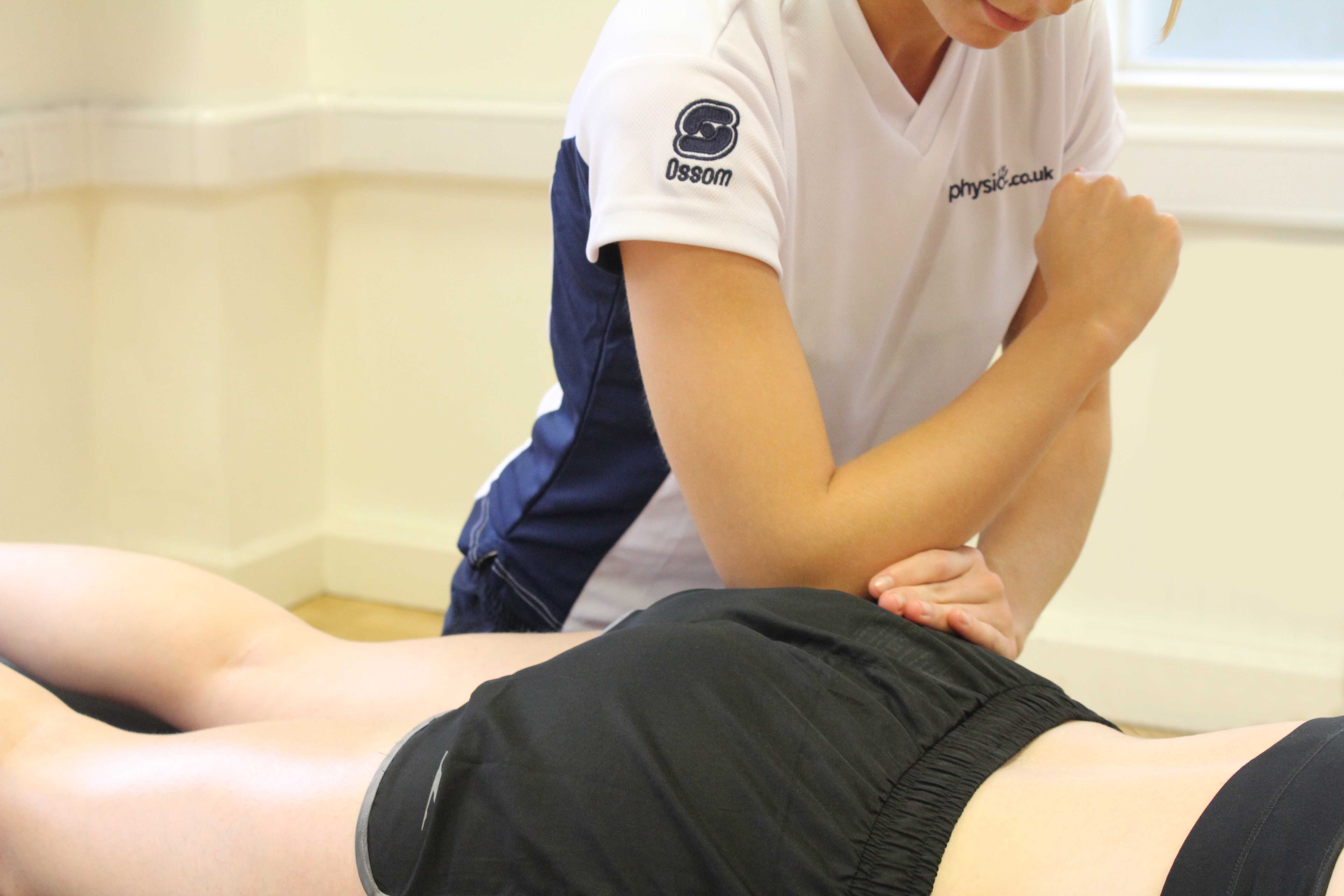 Above: Deep tissue massage of gluteus maximus muscle
Above: Deep tissue massage of gluteus maximus muscleHow does a buttock massage help muscle tightness?
A buttock massage can help treat tight muscles. Tight muscles can result in muscle pain and discomfort if not treated.
A buttock massage aims to relieve muscle tightness by improving blood circulation.
When muscles are tight, tissue elasticity is restricted. A buttock massage increases the temperature of muscles to help reduce restriction of tissue elasticity. Muscle temperature is increased as blood circulation improves. Blood circulation is improved by the friction created between the skin and fingers. Reducing restriction allows the muscle to loosen and increase in flexibility, relieving tight muscles.
What are the benefits of a buttock massage?
There are a variety of benefits gained through a buttock massage. Benefits of a buttock massage include:
How does a buttock massage decrease tension?
Decreased tension is a common benefit gained through a buttock massage. Tension in the muscles is caused by muscles staying contracted and not relaxing. If not treated, muscle tension can cause the muscle to fatigue and produce a muscular ache.
A buttock massage aims to reduce muscle tension by relaxing the muscles.
As muscle temperature rises due to the increase in circulation, muscles loosen and increase in elasticity. As muscles loosen, deeper strokes can be used to get deeper into muscle tissues. Getting deeper into muscle tissues helps to further increase muscle elasticity and reduce restriction. Reducing restriction allows muscles to relax and loosen. Relaxing and loosening the muscle tissue helps relieve muscle tension. Relieving tension helps reduce muscle pain.
How does a buttock massage prevent delayed onset muscle soreness?
A buttock massage can prevent delayed onset muscle soreness. Following intense activity, lactic acid and other waste products build up. If not removed, the muscle fatigues more easily causing muscle tightness and a painful aching sensation.
A buttock massage intends to remove the build-up of waste products before they can have an effect on the body by stimulating the lymphatic system and increasing cellular exchange.
During a buttock massage the lymphatic system is stimulated. Stimulation of the lymphatic system encourages an increase of metabolic wastes to be removed from the body more efficiently. A build-up of metabolic wastes can contribute towards muscular fatigue and pain. An efficient lymphatic system can decrease the build-up of metabolic wastes and reduce muscular fatigue and pain.
An increase in cellular exchange is also encouraged during a buttock massage. An increase in cellular exchange means more healthy nutrients and oxygen are provided to the muscles and more waste products are removed. An increase of oxygen and nutrients further decreases muscle fatigue. An increase in cellular exchange and the stimulation of the lymphatic system therefore prevents delayed onset muscle soreness.
How does a buttock massage reduce muscle tightness?
A buttock massage helps reduce muscle tightness. Muscle tightness can be caused due to a variety of reasons. The most common reasons of muscle tightness are overuse and injury. Muscle tightness can cause muscle pain if not treated.
A buttock massage aims to relieve muscle tightness by increasing tissue elasticity.
A buttock massage improves tissue elasticity within the muscles by increasing muscle temperature. Muscle temperature increases due to the improvement of blood circulation. Muscles are able to move more freely and loosen due to an improvement of tissue elasticity. Loosened muscles therefore reduce muscle tightness and pain.
How does a buttock massage decrease pain?
Decreased pain is a benefit achieved through a buttock massage. Muscle tightness, tension and stress are some of the most common causes of pain.
A buttock massage helps to relieve muscle tightness to help decrease pain.
During a buttock massage, muscle temperature is increased. An increase in blood flow encourages the rise in muscle temperature. Rising muscle temperature decreases inelasticity of muscular tissues. Decreasing inelasticity reduces restriction. Increasing muscle temperature and reducing restriction loosens tight muscles and relieves tension and stress. A reduction of muscle tightness tension and stress decreases pain.
Summary
A buttock massage focuses on the gluteus muscles. A variety of techniques are used within a buttock massage including compression, frictions, deep strokes and trigger pointing. A buttock massage helps treat acute pain, delayed onset muscle soreness, pre event and tight muscles. There are wide ranging benefits of a buttock massage including decreased tension, prevention of delayed onset muscle soreness, reduced muscle tightness and decreased pain. Our highly trained massage therapists at Physio.co.uk use a buttock massage to help relieve muscle tightness and tension and reduce pain.
The easiest way to arrange a buttock massage at Physio.co.uk is to email us at office@physio.co.uk or call us on 0800 033 7800.
Alternatively if you have any questions please feel free to contact us.
We offer a 7 day service and provide home and clinic appointments.

 0330 088 7800
0330 088 7800


































